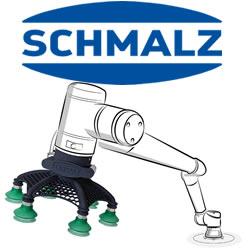Introduced at Photonics West: Breakthrough Technology Improves Photonic Coupling Acquisition Speed by One Order of Magnitude and More
New PI Photonics Alignment Solution a Game Changer for SiPh Production
San Francisco, CA - Silicon photonics (SiPh) is the rapidly emerging technology that builds optical circuitry alongside microelectronics on semiconductor wafers. This revolutionary field is driving applications ranging from autonomous vehicles, wearable health sensor, hyperscale data centers, and even new methods of computation. To further its leadership in enabling the rapid manufacturing scaling of this field, the PI Group introduces PILightning, the new first light search method with integrated AI-based real-time executive function. As the newest functionality in PI's award-winning photonics process automation suite, this fully autonomous and virtually instantaneous process (patent applied for) eliminates the need for time-consuming searches or manual intervention and drives down costs for test and assembly in all industrial photonics alignment applications, from wafer probing to final packaging. The PILightning algorithm is immediately available for PI's ultra-clean air-bearing, piezo flexure scanner and fast steering mirror mechanisms and leverages the power of ACS controls.
As the silicon photonics era dawned over a decade ago, it was rapidly established that a key challenge for scaling -- and the top cost driver for photonics manufacturing -- is the precise alignment of optical components. PI set the pace for the field in 2016 with the Fast Multichannel Photonics Alignment (FMPA) technology, which reduced the time and cost of manufacturing and testing of photonic devices and improves yield. But before the optimization process can even start, an optical signal, above the noise level, must be detected - a process called first light detection.
Finding first light has been a costly, laborious procedure in all industrial photonics alignment applications, including wafer probing and device packaging. But it is particularly time-consuming in devices with inputs and outputs where both sides must be lined up for even a threshold amount of coupling to be achieved.
Now, the PI Group has achieved a breakthrough in the form of a novel, search-and-alignment technique, promising to once again revolutionize this field. The new solution, dubbed PILightning, runs embedded on PI's advanced controller. It works in combination with highly dynamic mechanics, such as piezo scanners or direct-drive air bearing stages, enabling significant production-economics gains over previous first light search approaches.
PILightning drastically reduces the time required to capture first light in single- and double-sided couplings and in loopback (omega) waveguide configurations.
Tests have shown improvements of one order of magnitude and more in single-sided alignment applications. Even higher gains are achieved in double-sided first light detection applications. The larger the search area and the more complex the alignment, the more significant the gain.
PILightning is immediately available on PI's ultra-clean air bearing-based F-142 and F-143 multi-axis photonics alignment system, as well as ACS-based piezo stage and steering-mirror controllers. Further modular expansion and potential upgrades to existing FMPA systems are being developed.
Industries Served
Photonics, Silicon Photonics Probing and Assembly, Optical Communication, Satellite Communication, LIDAR
More information on PILightning and other photonics-related solutions presented by PI at Photonics West
Featured Product

